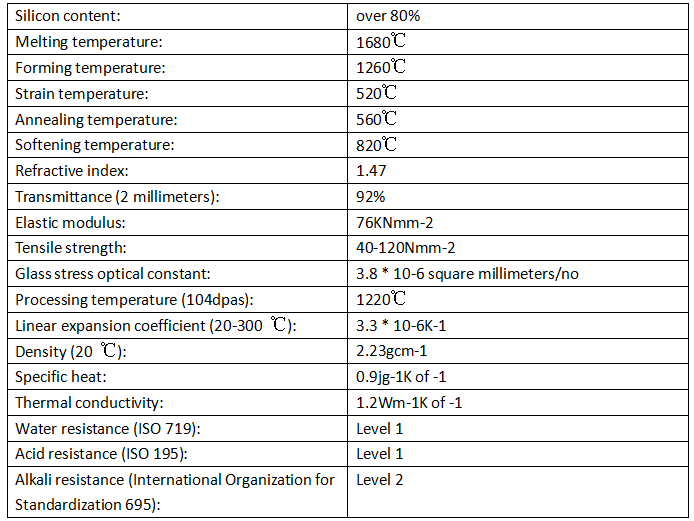High Borosilicate glass
High borosilicate glass (also known as hard glass) is also known as "borosilicate glass 3.3" due to its linear thermal expansion coefficient of (3.3 ± 0.1) X10-6/K. It is a special glass material with low expansion rate, high temperature resistance, high strength, high hardness, high light transmittance, and high chemical stability. Due to its excellent performance, it is widely used in industries such as solar energy, chemical industry, pharmaceutical packaging, electric light sources, and craft accessories. Its excellent performance has been widely recognized by various sectors of the world, especially in the field of solar energy, which is more widely used.
Physical and chemical properties
Borosilicate glass has a very low coefficient of thermal expansion, about one-third of that of ordinary glass, which will reduce the impact of temperature gradient stress and thus have stronger fracture resistance. Due to its very small shape deviation, it becomes an essential material in telescope reflectors. It can also be used to process highly radioactive nuclear waste.
Borosilicate glass begins to soften at approximately 821℃ (1510℉).
Borosilicate glass is less dense than ordinary glass.
Although borosilicate glass has better thermal vibration resistance than other types of glass, it can still break due to rapid or uneven temperature changes. When broken, the cracks in borosilicate glass are often larger than crushed.
In terms of optical performance, borosilicate glass has low dispersion (about 65 Abbe coefficient) and relatively low refractive index (the entire visible light range is 1.51-1.54)
The linear expansion coefficient of high borosilicate glass is 3.3±0.1X10-6/K, which is a type of glass composed mainly of sodium oxide (Na2O), boron oxide (B202), and silicon dioxide (SIO2). This type of glass has a high content of boron and silicon, with boron content ranging from 12.5% to 13.5% and silicon content ranging from 78% to 80%. Therefore, it is called high boron silicon glass. PYREX glass belongs to borosilicate glass. It is acid resistant, alkali resistant, and water resistant, with superior corrosion resistance and good thermal stability, chemical stability, and electrical performance. Therefore, it has characteristics such as resistance to chemical erosion, thermal shock, good mechanical properties, and high temperature resistance.


